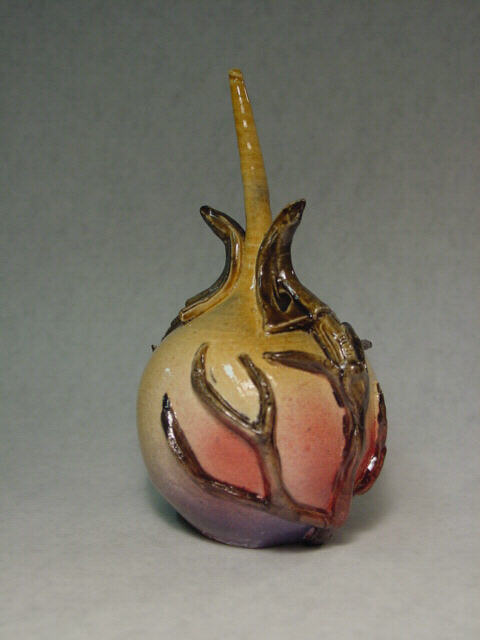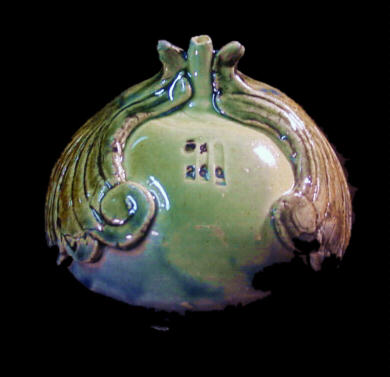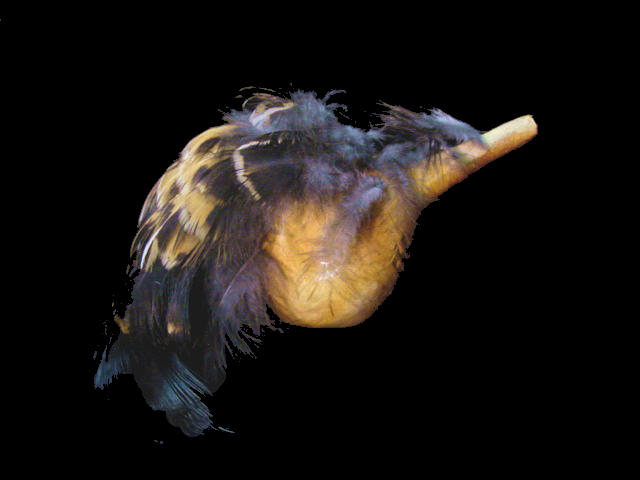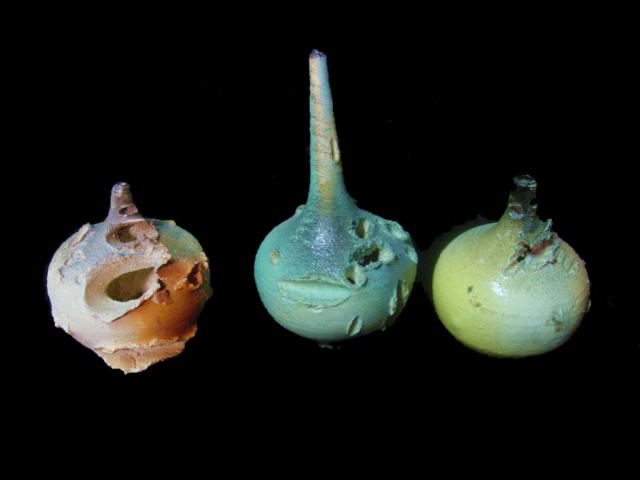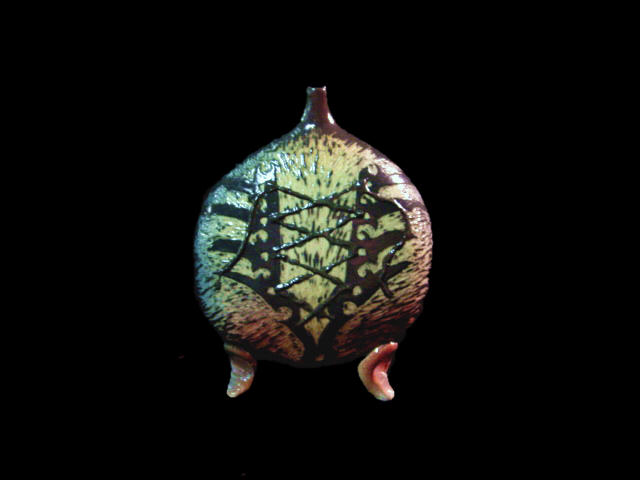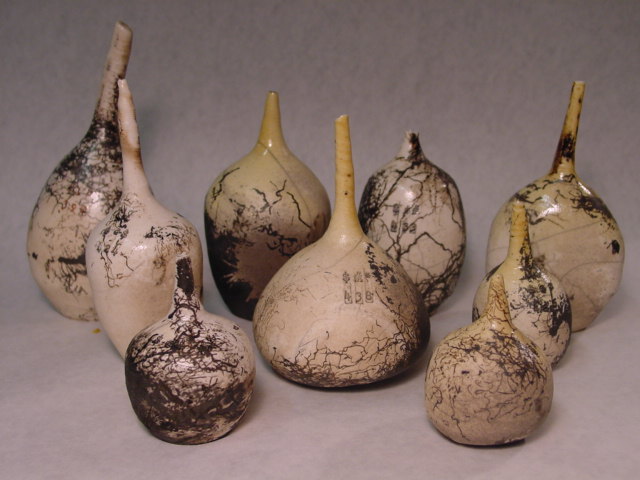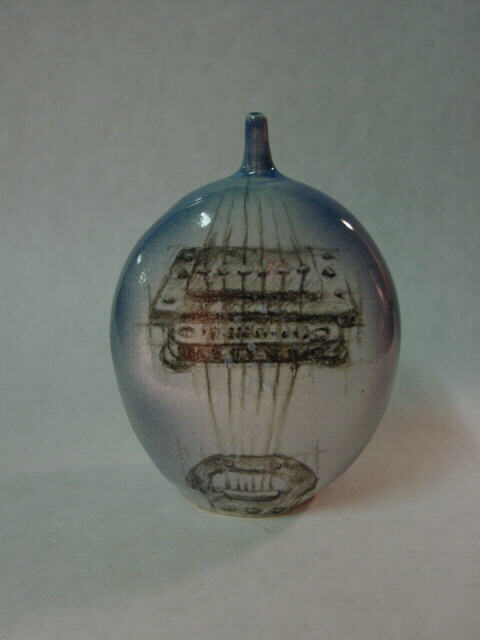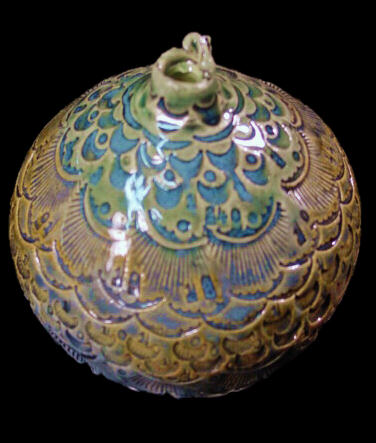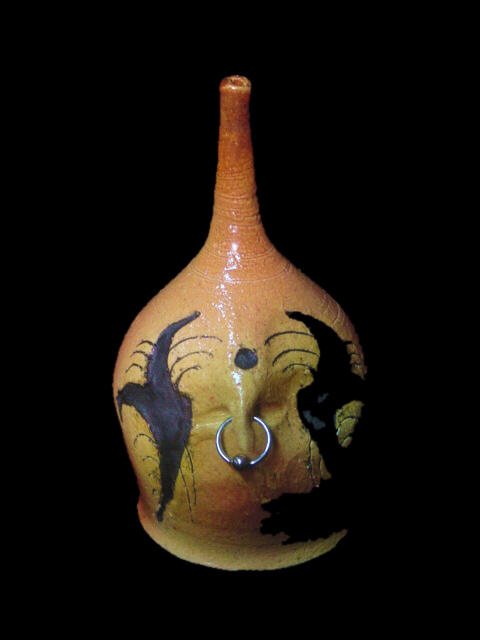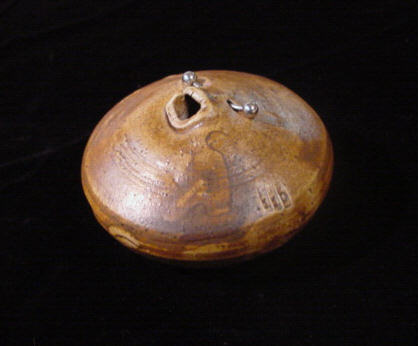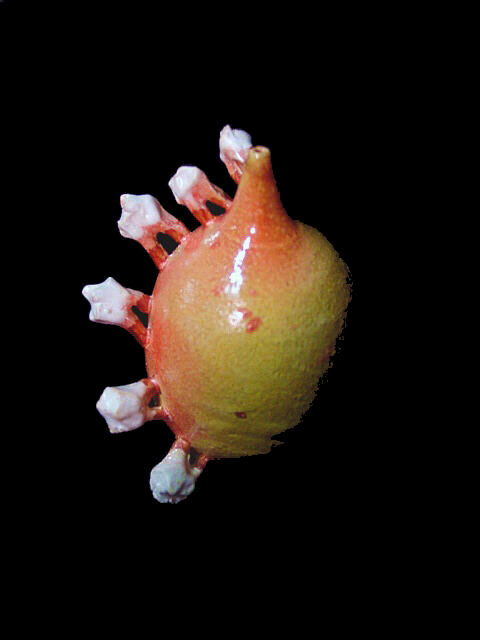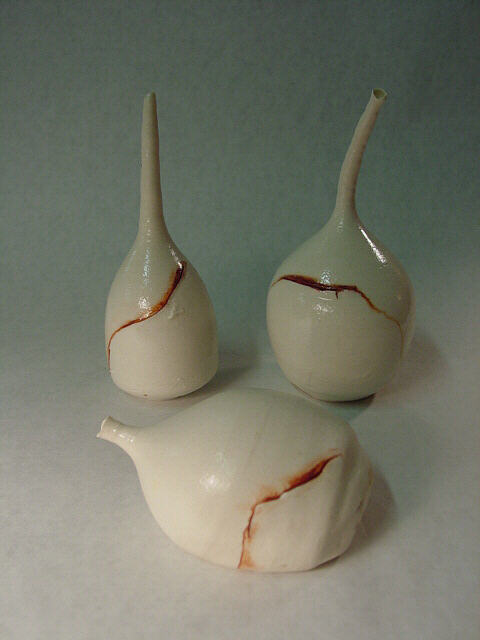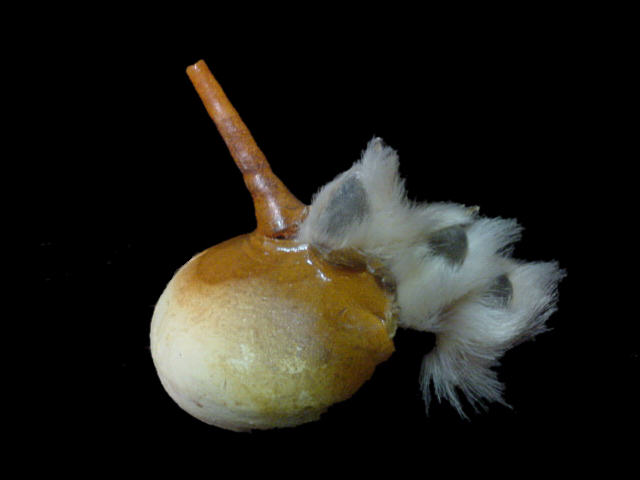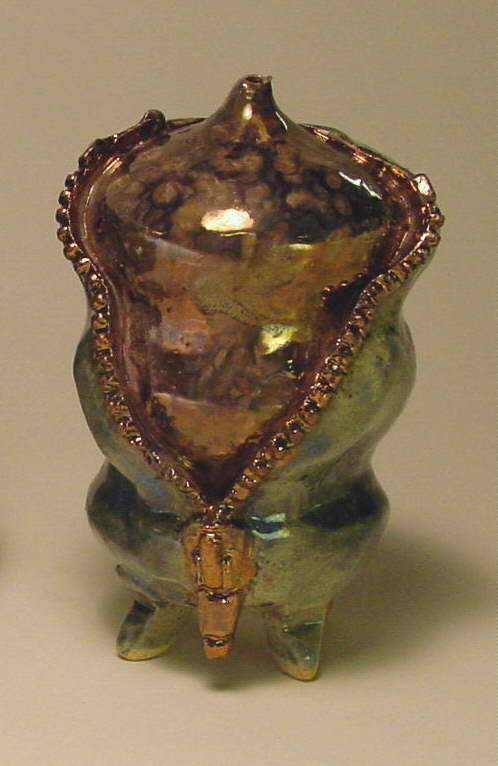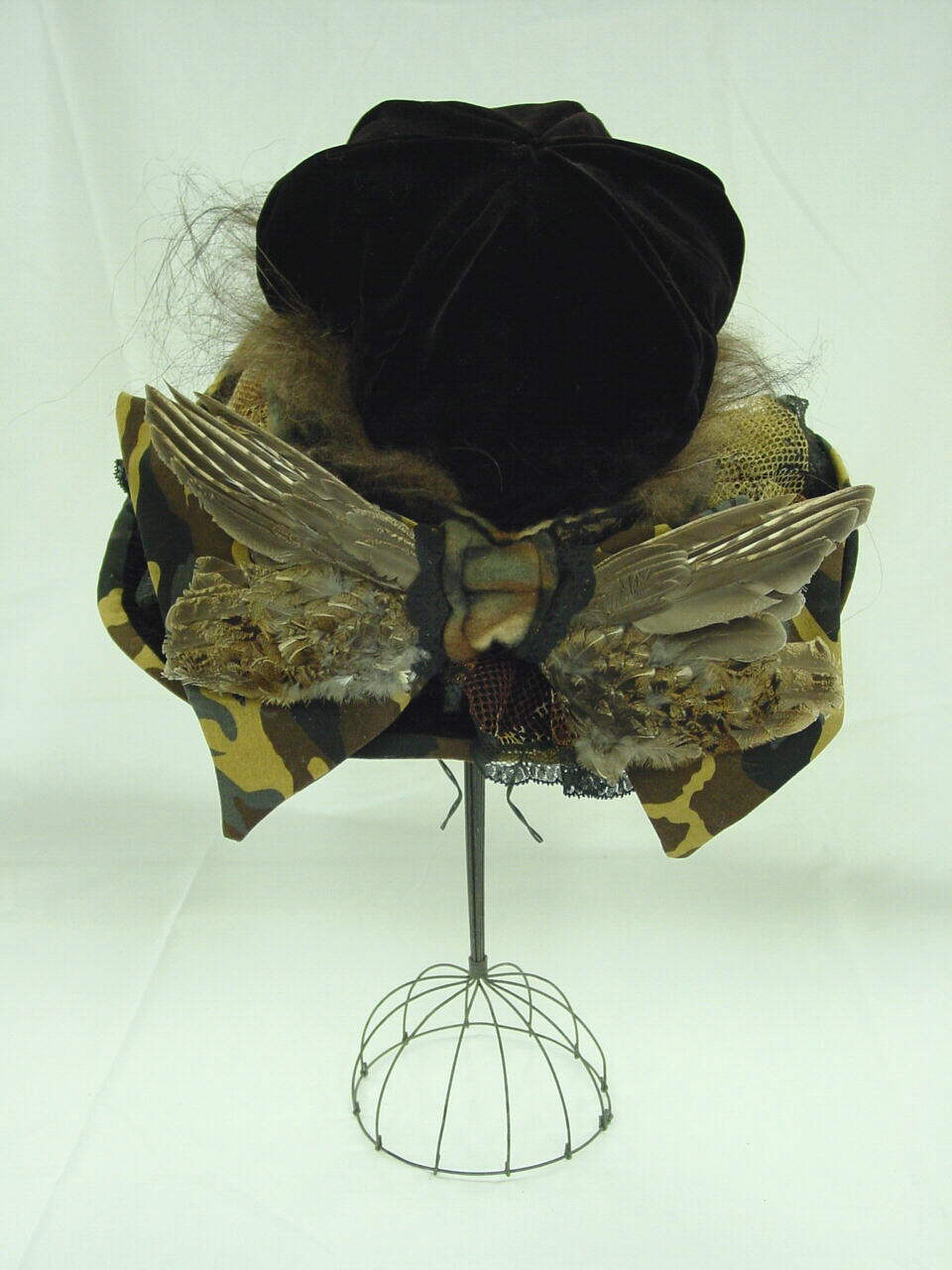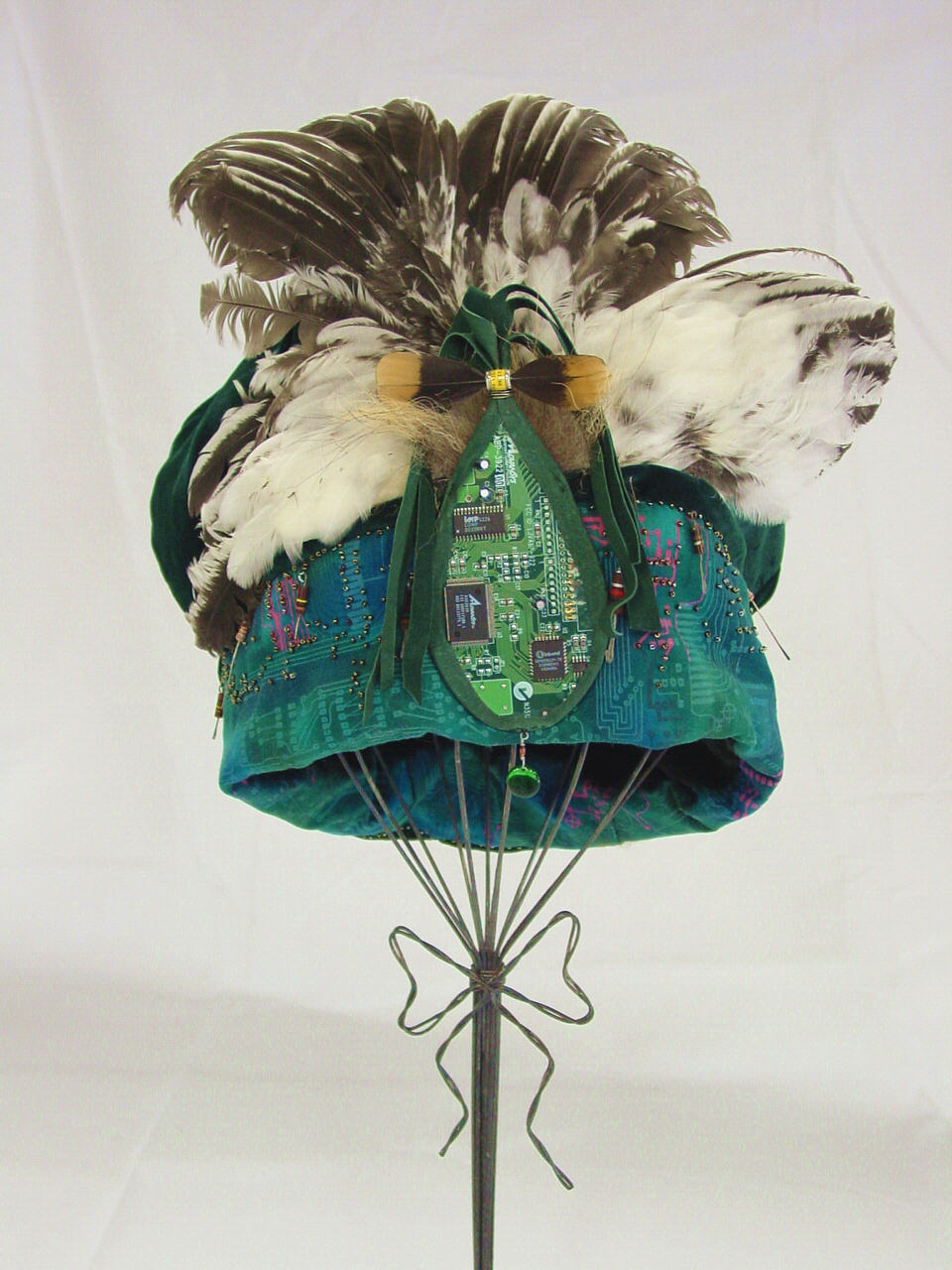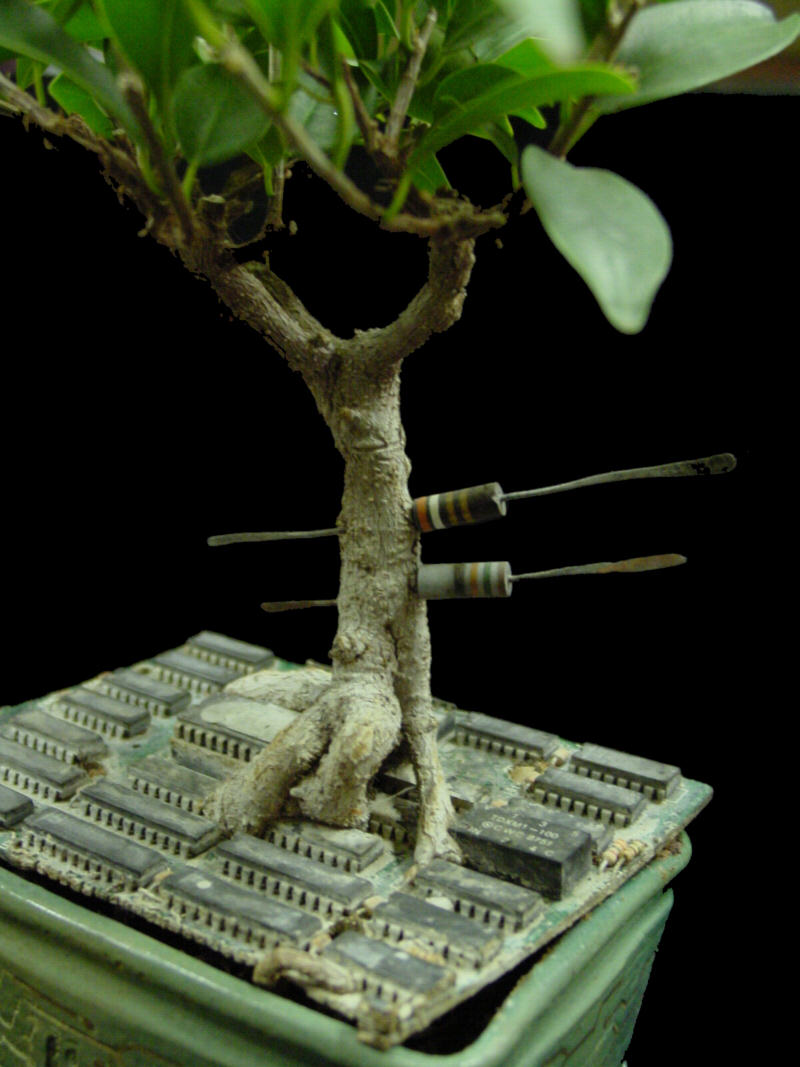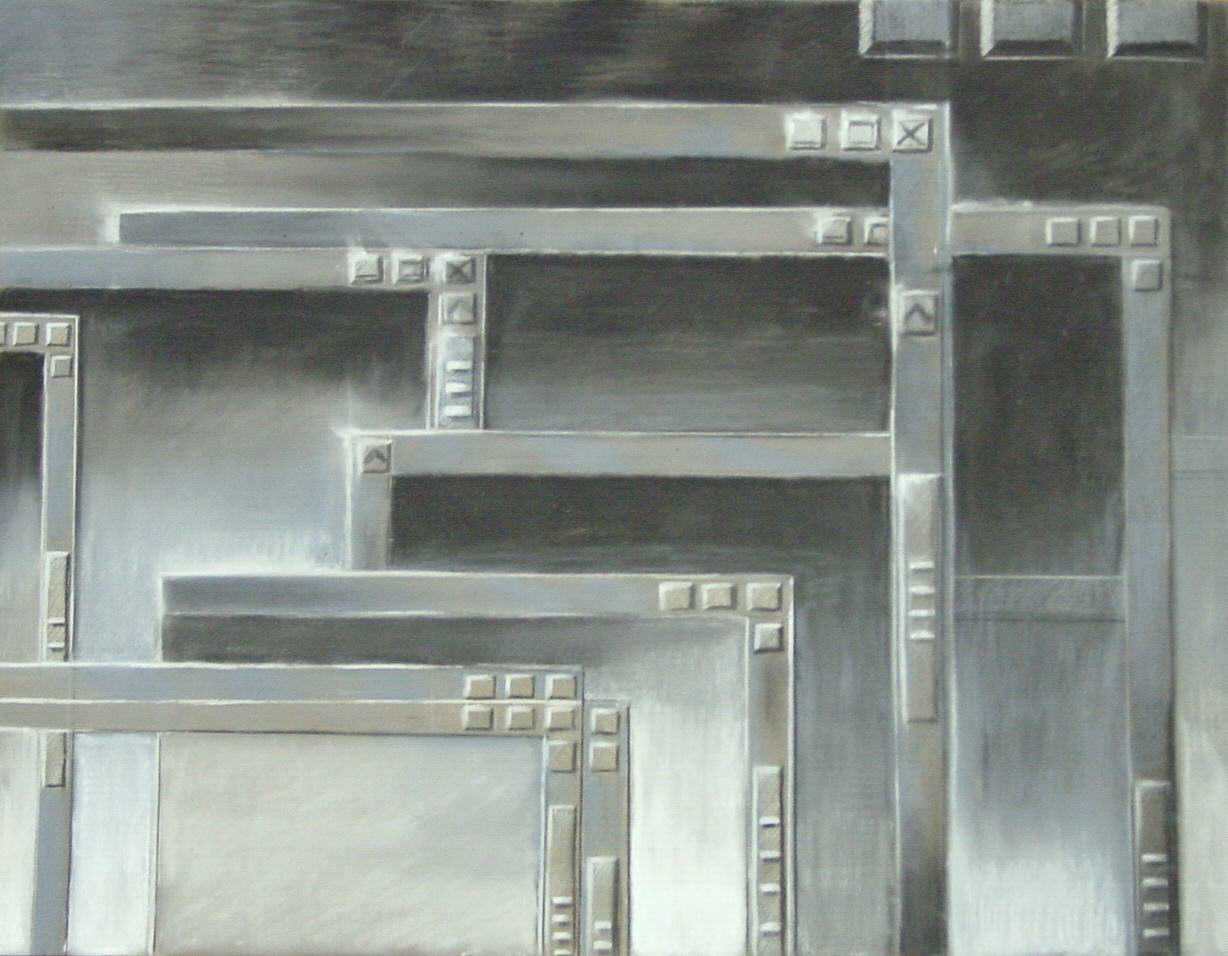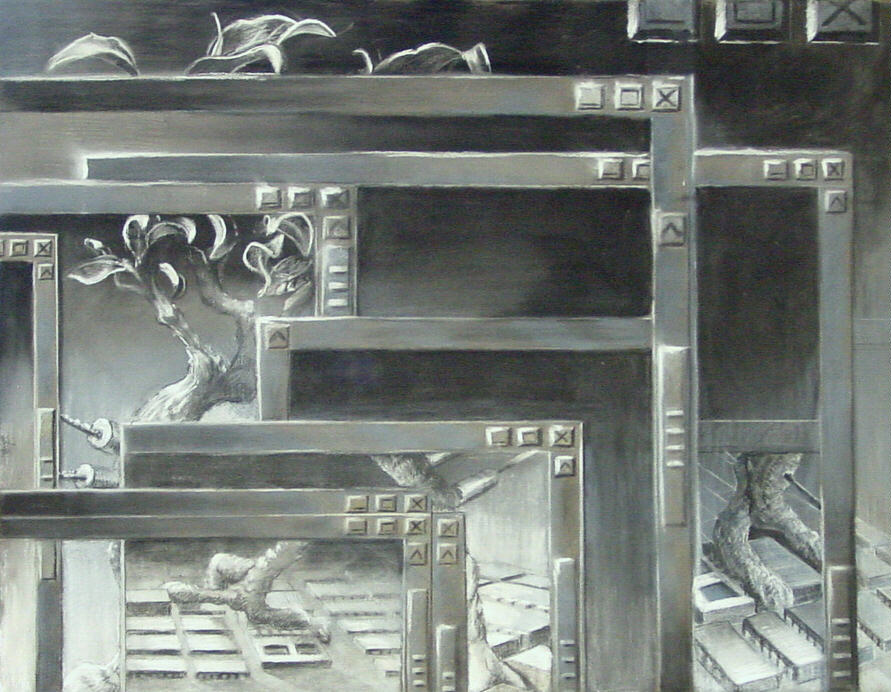1000 Bottles of Solitude
I decided to make “a couple” small bottles for ceramic glaze testing. “A couple” became “a few” then became “many”. I originally called them 100 Bottles of Solitude but changed their title after completing over 200 with endless permutations still in my head. Ultimately, they have taken on a life of their own.
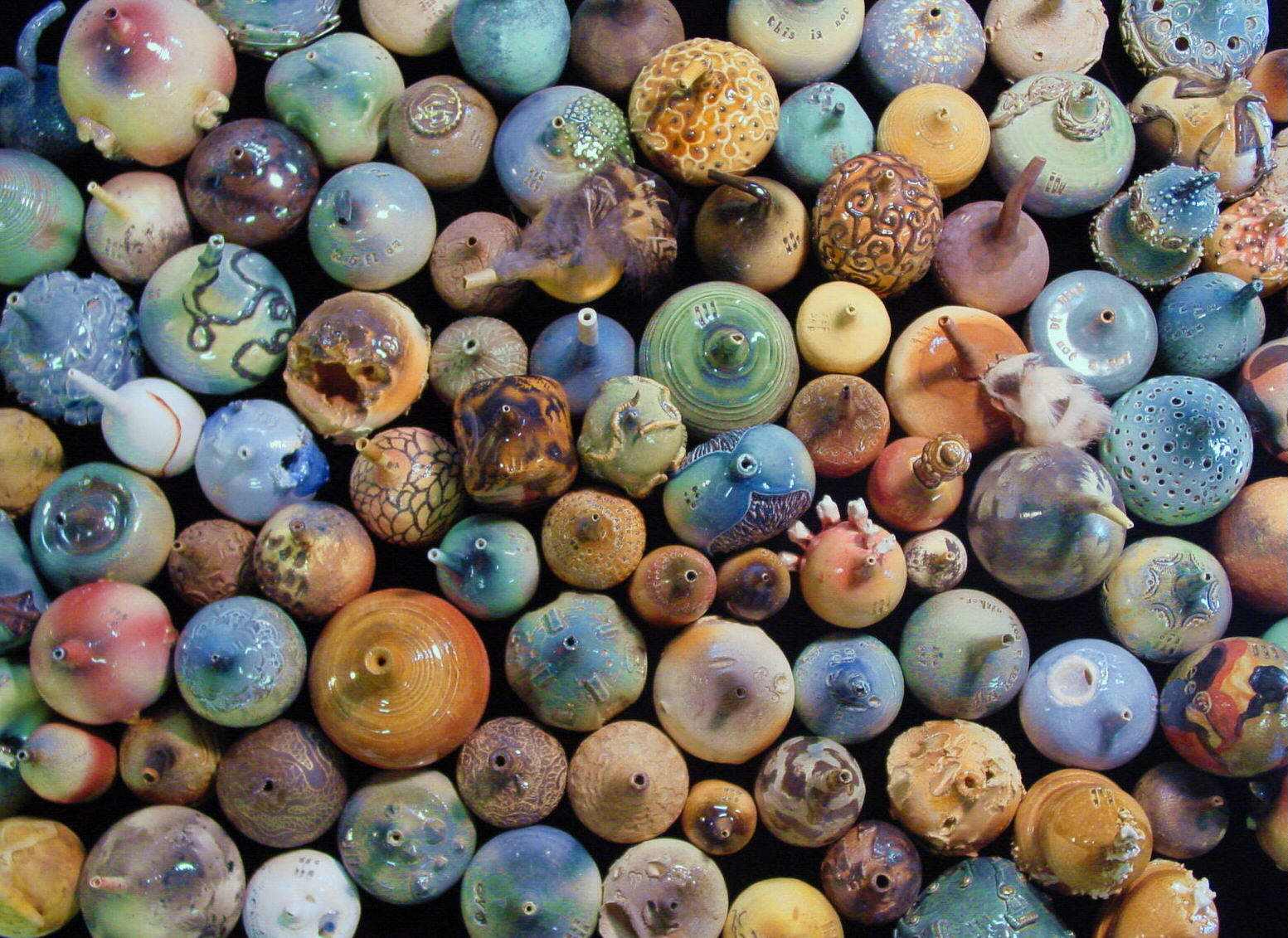 Selections from 1000 Bottles of Solitude
Selections from 1000 Bottles of Solitude
I consider the bottles three dimensional sketches and the entire series a sculptural journal. I particularly enjoy using random events (dropping, throwing or shooting) and domestic items from my daily life (spark plugs, forks, bones), as this allows me to distill that moment in time. Taken out of context and made permanent in high fired ceramic, they become compelling in ways I hadn’t planned, expressing the melancholy, whimsy, despair, absurdity or preciousness hidden within the mundane, the common and the every day.
And yes, I’ve read 100 Years of Solitude. I didn’t like the book, I do like the title.
“Solitude is unAmerican.” Erica Jong
Detail images of a few of the bottles:
